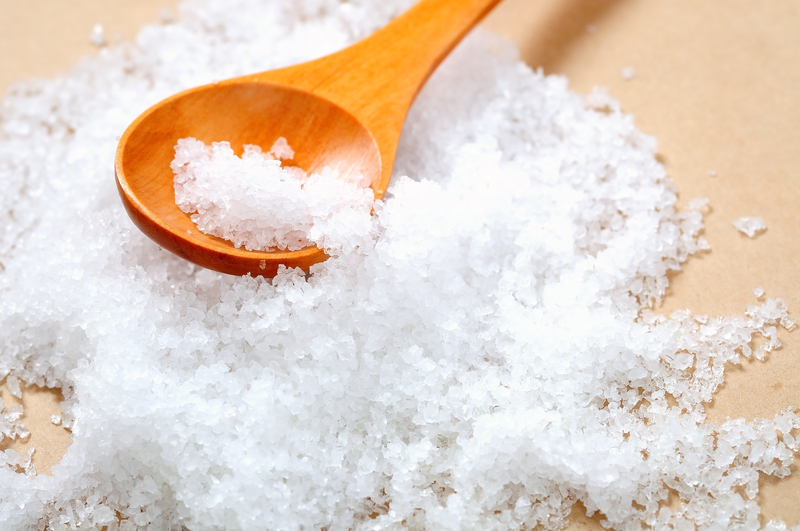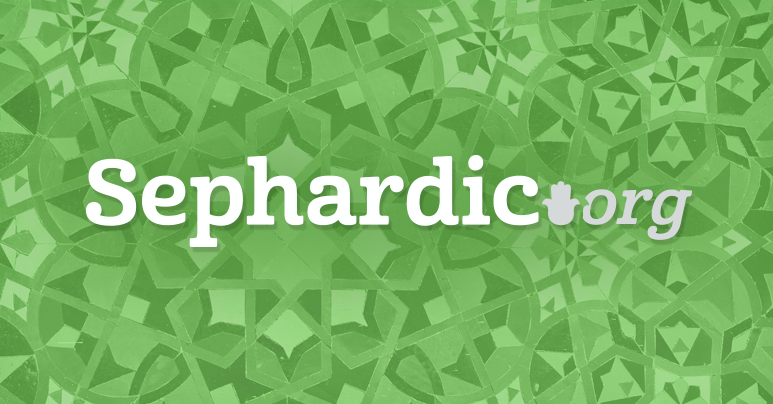
According to the commentary of Ibn Ezra, a rain of salt was part of the upheaval in the destruction of the city of Sedom. It appears from the verses in our parasha that at least initially it was exclusively sulfur and fire that were used. "And Hashem made sulfer and fire rain down upon Sedom" ( Bereshit 19). Ibn Ezra's assertion is apparent from a pasuk in Davarim 29:22, that salt indeed had been used. In the verse following the destruction of the area, we see the reference (19:26) that Lot's wife had looked behind him and she was turned into a pillar of salt.
Evidently the salt had been gathered up from what had fallen and transformed her into this mineral. Interestingly enough, Josephus writes (2000 years ago) that in his time the pillar could still be seen. It was also known in the time of the Talmud. (Berakhot 54). Based on the fact that the divine name Havaya YHVH (associated with mercy), is used in the upheaval, וה׳ המטיר על סדם I propose that the salt that descended upon the area was not aimed to destroy but possibly to purify the land.
This cleansing property of salt can be found in the narrative of the prophet Elisha purifying the waters of Yeriho by casting salt into its' springs. As the people of the city of Yeriho told Elisha that the water was bad, "He responded: Get me a new jar with salt in it... He went out to the source of water and threw salt there and said. Thus said Hashem: I have cured this water; there shall no longer be from it death and bereavement. So the water became cured, until this day..." (Kings II 2:19-22).
The salt here being a vehicle to purify the deathly waters of Yeriho. Based on this we can possibly assume that the Salt of Sedom might have served as an additive to the destruction; sent by the merciful one in order to some extent purify the cities and not to serve as a vehicle of destruction.
We can safely assume that biblical Sedom was situated by the ים המלח Dead Sea. Significantly at the southern end there is mountain of salt that covers an area of 18 square miles known today as Sedom Mountain. Although now covered by layers of dirt, the area beneath it is solid salt.
According to a simple understanding of the Talmud, the Salt of Sedom or מלח סדומית finds itself in bread. It is said to be very potent with a potential to damage ones eyes if not washed away subsequent to a meal. Its potency, a result of an admixture of the acrid potassium chloride (chemical compound) of the Dead Sea. According to some of the earlier authorities, this danger being the primary reason the Rabbis declared it obligatory for one to wash his fingers at the conclusion of a meal prior to the recital of Birkat Hamazon.
If this salt has such a potential to injure consumers; why would it be a fixed ingredient in breads baked as far north as Amoraic Bavel ( the area that the Talmud Bavli was composed)? The Gemara assumes that the Salt of Sedom is prevalent in all locals! The Rabbis of the Talmud do not even entertain the notion that the Salt of Sedom might not be included in the dough! It is a given fact! Why? This behooves us to look at this from a different perspective.
On a deeper level, we must say that the Salt of Sedom is a spiritual ingredient of a bread meal that attaches itself to the hands of the consumer in order to offer him some type of purification. Since all would agree that each time we consume a meal of bread, even if preformed for the most part for the sake of heaven it is always accompanied by some self gratification.
This seemingly minor infraction does have a consequence. Since it mimics (albeit in a minor way) the sin of our forefather Adam HaRishon who also ate from the Es HaDaat in self gratification. The hands are among the culprits of this self gratification hence require a potent spiritual cleansing in the form of Melah Sedomit at the conclusion of the meal.
We are taught by R. HaAri (Shaar Hamisvot Ekev) that at each meal there is a spiritual accuser standing by us to see how we plead to this infraction, similar to the offense committed by our forefather Adam. We can enter a plea of innocence thereby allowing the accuser to bring us to trial concerning our thoughts in consuming the meal. If we ate completely for the sake of heaven (in contrast to Adam), then we will be found guiltless. If not, this complete denial may expose us to an uncertain outcome; with the possibility of being found guilty.
The second option is to admit that we have not eaten completely for the sake of heaven; and thereby acknowledge that it was necessary for the Salt of Sedom to attach itself to the 14 joints on the fingers of each hand (Sidour HaRashash). This results in a minor almost insignificant award being granted the accuser. Our Rabbis have declared that considering our nature we should all opt to admit our deficiency.
So at the conclusion of the meal immediately prior to the recitation of Birkat HaMazon our Rabbis (Hulin 105) have obligated us to wash our fingers and theoretically declare. "I have not eaten completely for the sake of heaven. Thereby, the Salt of Sedom has attached itself to my fingers. I hereby admit to this and hence I am obligated to wash them. This is my admission and plea agreement I am making with my accuser. Hence I declare "Mayim Aharonim is for Hovah". Namely, the last waters is for the accuser named Hovah (Based on the Zohar Terumah 154).
We have suggested based on the Zohar that the word חובה Hovah is the name of the accuser. In addition to the Zohar sighted, there are a few hints that Hovah is a word not merely advising us of the obligation to wash, but is a hint that the washing is part of a plea deal. When Abraham gave chase of the four kings who had captured Lot, we are told that he chased them until חובה Hovah (14:15). The Midrash (Tanhuma) notes that this place was called חובה Hovah due to the idolatry that would take place there in the future. Evidently the name of the place is associated with idolatry, which is surely part of the domain of the accuser.
This also conforms with the often used Rabbinic dictum that when one fulfills certain precepts he is said to be released from the grasp of the accuser Hovah. יצא ידי חובה. This is the more literal interpretation versus the simple translation of "fulfilled an obligation". This is why the Talmud ascribes the word חובה to Mayim Aharonim and does not substitute Misva as it does with Mayim Rishonim.
The law remains (Shulhan Arukh 181:1) that even if we are not concerned with the physical Salt of Sedom (Tosafot) we are always subject to the spiritual Salt of Sedom. (Kaf HaHayyim 181:1). Accordingly all should be particular in this manner in washing a part of all 14 joints of the fingers of each hand and immediately without extraneous interruption begin Birkat Hamazon.







